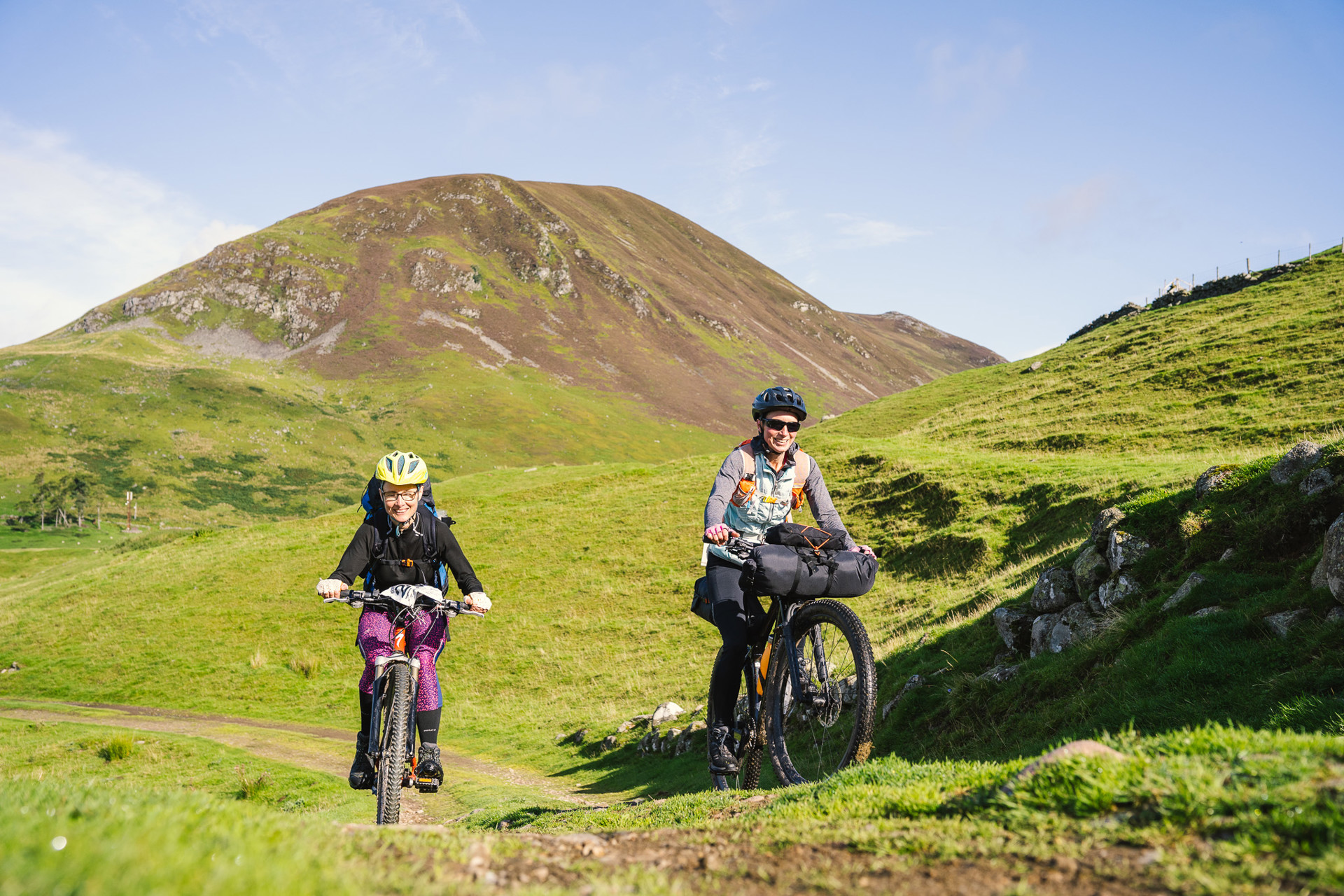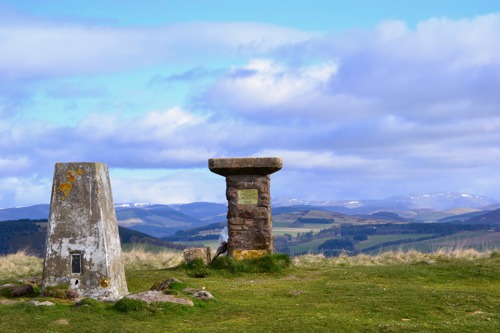
The Cateran Ecomuseum
by Robin McKelvieThe word museum does not remotely do the Cateran Ecomuseum justice. This massive natural wonderland spreads its bucolic tentacles across 1,000 sq km of eastern Perthshire and western Angus, a unique, wide-ranging project that has community at its passionately beating green heart, along with the ‘temporary locals’ that are so central to SCOTO, Scottish Community Tourism Network.
Museum Without Walls
Clare McMicking, Marketing and Communications Officer explains: “The Cateran Ecomuseum is an outstanding new cultural destination in Tay Country. Stretching across the beautiful and dramatic landscapes of ‘Cateran Country’, all of the Ecomuseum sites are outside. This museum without walls has been designed to reveal the hidden heritage of what is a little-known part of Scotland by the community who live there, and tells the story of its people, places and landscapes across 8,000 years of human history and 400 million years of geological history.”

This idea of a museum without walls reminds me of UNESCO’s much-vaulted Biospheres, which we have in Scotland. But Clare Cooper, a director of the Cateran Ecomuseum, is keen to stress the difference: “We are not prescriptive like a Biosphere can be. Our Ecomuseum is a social enterprise with a group of directors, all of whom live and work here. Our Ecomuseum is made and managed by the people who live here. What we do arises from what the communities want to do with their landscapes and heritage.”
Slow Tourism
Ecomuseums are unusual in Scotland. Indeed, there is only one other in Skye. Cooper learned about Ecomuseums at a slow tourism conference in Italy when she met one of the founders of the Ecomuseum movement - “They originated in France in the 1970s and are still a relatively new concept with only around 1,000 worldwide. They are set in specific landscapes, are community-led and managed, offer a more holistic natural and cultural frame for the interpretation of heritage, and are a focus for tourism that prioritises community empowerment. We expressly commit to a regenerative tourism approach to destination development and aim to become one of Scotland’s premier and most accessible car-free holiday and active travel for leisure destinations.”
This sustainable – as they point out, even regenerative - approach is helped by the location. The Ecomuseum is tucked south of the Cairngorms, close to the cities of Perth and Dundee, with easy connections to Scotland’s three major cities - Edinburgh, Glasgow and Aberdeen. It is well placed, too, for the new electric bus service that links Edinburgh with Dundee and Perth.

Handily, there is a bike shop that hires bikes and e-bikes in Alyth (Alyth Cyclery) in the south of the Ecomuseum, where the Ecomuseum’s hub is also located. The hub is housed in the old Alyth Museum, which was reborn in 2022 with lots of new content upstairs, such as photos, text and films, with descriptions of the kinds of places you can visit, whether you’re local or a ‘temporary local’. Downstairs is a rolling exhibition that, in 2024, will focus on food producers in the area and how they are transitioning in these times of biodiversity, climate and economic crises.
A Landscape That Is Alive
I know the area that the Ecomuseum covers well, a deeply dramatic world of rugged hills, vaulting mountains and tumbling glens that is instantly cinematic. It is a landscape that is alive with drama. McMicking talks of “Prehistoric megaliths and Pictish symbol stones to explore, unknown stories from the great legends of King Arthur and the pan-Gaelic hero Finn mac Cumhaill, contemporary histories of the Scottish Traveller community, important events linked to the great Jacobite rebellions, and fables of the Caterans themselves - the Highland clan warriors who came to be associated with cattle raiding in the 17th and 18th centuries.”

It doesn’t stop there – “You can discover the history of Scotland’s berry capital, Blairgowrie, and visit the site of its former Victorian textile mills, walk a part of the Highland Boundary Fault in Alyth and enjoy its well-preserved old town centre, and hike or cycle along the Cateran Trail, one of Scotland’s great long-distance paths, which offers you spectacular views through huge landscapes sculpted by glaciation and traversed by old drove roads and ancient rights of way.”
The launch of the Cateran Ecomuseum in November 2019, though, could scarcely have been worse timed, just before the global coronavirus pandemic hit. Its aims were clear, though, striving – as McMicking puts it – “to attract both local people and visitors, ‘temporary locals’. We put together 25 pre-designed itineraries connecting folk to nearly 140 points of natural and cultural heritage interest – and we have only just started to scratch the surface. Funding permitting, we also have a regular programme of events and activities that aim to interpret this heritage in unusual and surprising ways.”
I can really feel their passion and pride for a landscape and communities they both clearly love. McMicking grew up here, then came back to raise her children after 20 years away – “I wanted them to grow up here. This part of the world is so beautiful, we are so lucky. There’s nowhere else I’d choose to live now.” Cooper’s family links to the area go back to the 1990s. She says, “I grew up in East Africa, and the big skies and big landscapes here remind me of East Africa.” I had never thought of that before, but having been to both, I can see exactly what she means.
The Museum of Rapid Transition
A key focus of the Cateran Ecomuseum is its Museum of Rapid Transition programme. McMicking explains its scope: “It aims to connect local people and visitors to the natural and cultural heritage of the area in ways that will inspire them to take rapid climate action and transition to more regenerative ways of living. We started with a focus on projects and activities that revealed how changes in geology and climate have shaped our landscapes, determined flora and fauna, influenced human settlement, land use, and social and political organisation and demonstrated both how our past actions have degraded these landscapes and how, by reconnecting to ancient knowledge, we can regenerate and innovate our relationship with it. We are now bringing in other themes, the role of imagination in our past for example, and how our ancestors innovated in response to social, economic and environmental change. In a nutshell the Museum of Rapid Transition aims to show how the story of our past can help guide the story of our future.”

The programme aims to involve a wide range of people across the generations and with all events free of charge, it is hoped that anyone feeling the financial pinch will find plenty of activities to enjoy. McMicking gives me an example – “The ‘River Detectives’ is an initiative which sees around 30 volunteer community scientists and historians working with leading academics on a research project looking at how people have changed the landscape in Strathmore over the centuries. The benefits of volunteering are well-documented, and it is hoped that those taking part will learn valuable and transferable new skills.
“This year we are programming a ‘pop-up’ Iron Age village which will see three days of workshops, storytelling, talks, crafts, food and events all aimed at empowering people to imagine and realise low carbon, climate resilient futures through heritage.”
Looking to the future, there is what Cooper calls a “legion of possibilities”. One is to develop a partnership with the University of the Highlands and Islands focusing on archaeological work to open up the Ecomuseum. Cooper feels this is important: “We have at least 1,700 sites of archaeological interest. How we take care of them, and whether and if so, how they can be preserved in the light of climate change is crucial.”
Temporary Locals
Another future direction chimes positively with SCOTO. “We want to encourage ‘temporary locals’ to be mindful of our world. And to take time to learn and develop. We are looking at developing a whole range of voluntourism experiences. People could come on activities such as tree-planting or biodiversity survey camps, trail clearing or removal of non-native species - things we need to be doing at a community and a wider level if we want to save the natural world we all depend on.”
https://vimeo.com/user98734228
https://twitter.com/CateranEco
https://www.facebook.com/cateranecomuseum
https://www.instagram.com/cateraneco/
